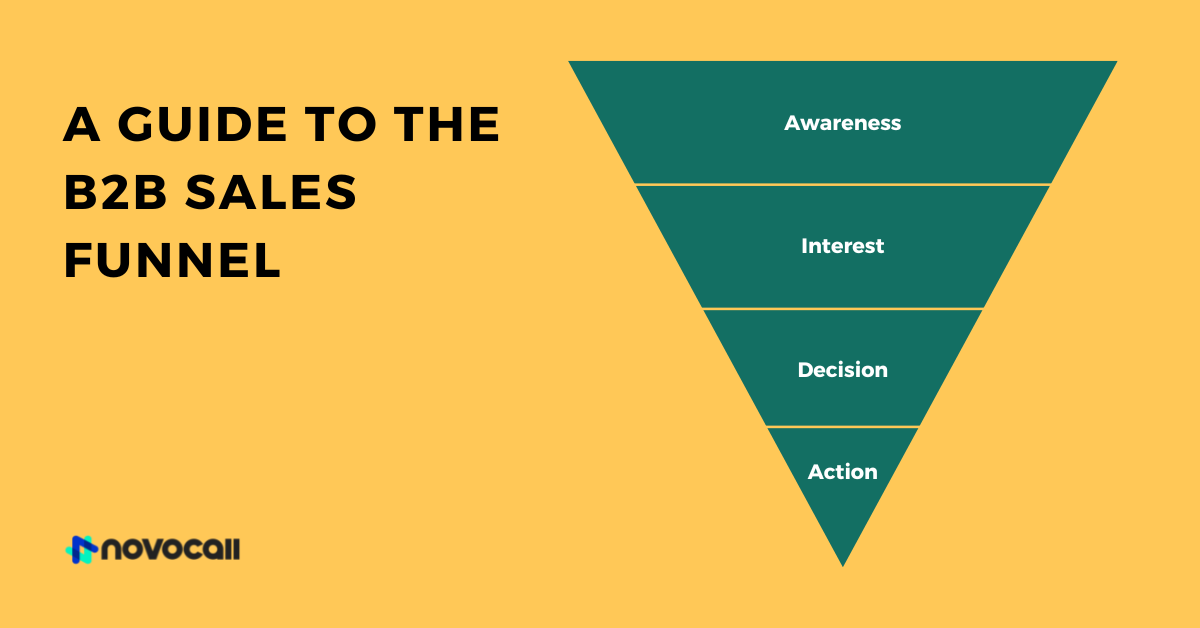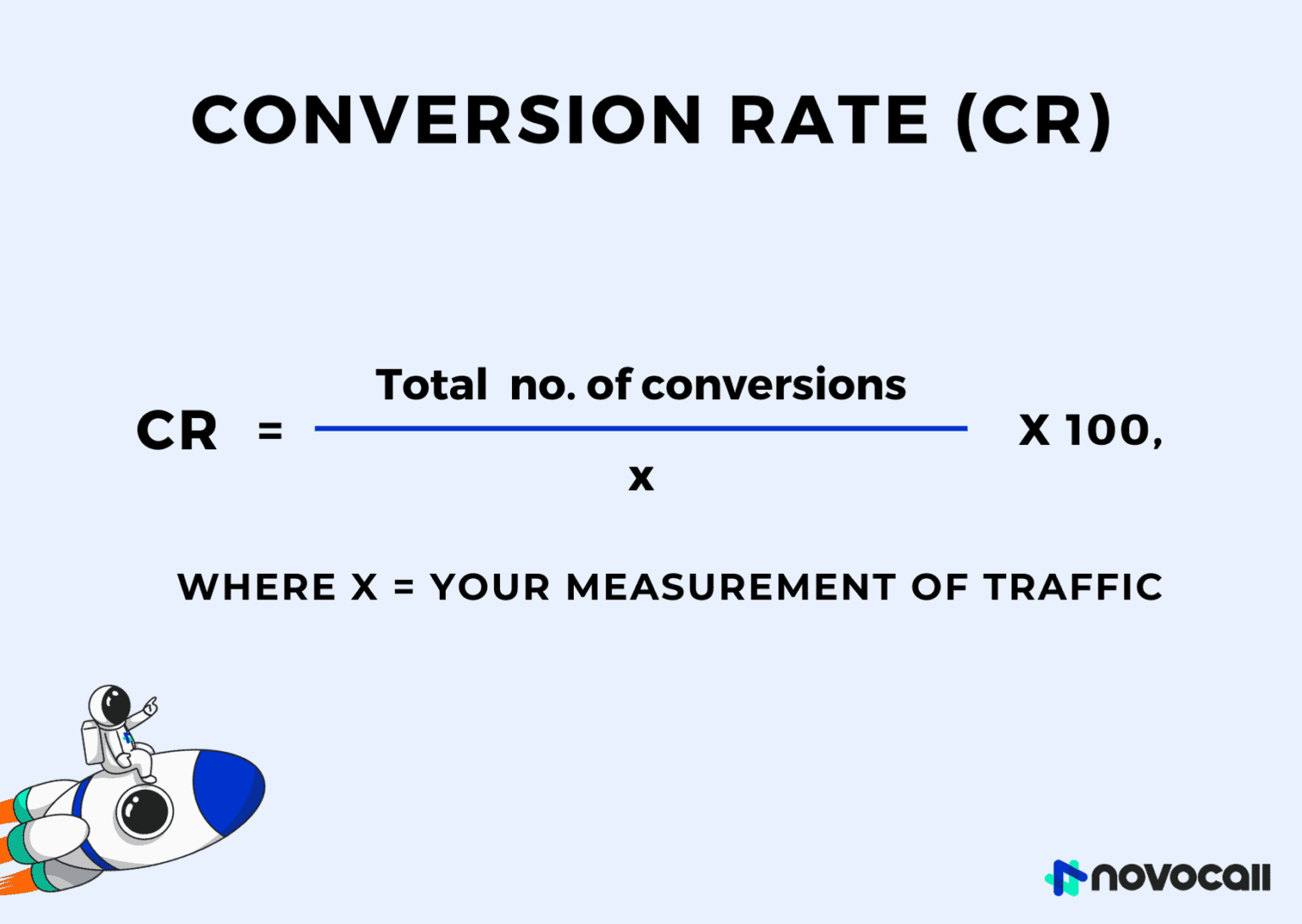


Start driving better conversations.
Novocall will be your new favorite business phone system.


When you are calling the shots in marketing, you need to make vital decisions quickly and focus on the most critical aspects. And that also includes making decisions with lead conversion rates in mind, which may become a problem to some.
But fret not! We’ll share the average B2B lead conversion rates across several industries such as finance, healthcare, education, and SaaS, for you to keep in mind.
We’ll also bring you exclusive insights about the science behind B2B lead conversion rates to help you generate more leads and improve your marketing campaign performance.
In general, there isn’t such a thing as a universally ‘good conversion rate’. Like we always say, there’s no one-size-fits-all approach because it varies by industry, business model, average sales length, and many other factors.
As you’ll see later, there’s a correlation between the price and the conversion rate where high ticket items have a much lower conversion rate compared to lower value items. That’s because higher value items (i.e. car, house, expensive software) generally require more time , assistance, and consideration before making the big purchase.
In order to clearly identify a ‘good conversion rate’, you need to look at your overall business goal and select a value that helps you achieve that goal.
With that in mind, let’s take a look at the average conversion rates across multiple industries!
We have listed the average lead conversion rates for some industries, to help you make quicker and more accurate decisions in any project.
(Thanks to the team at RulerAnalytics for this data!)

As we mentioned earlier, the more expensive a product is, the lower the conversion rate. That’s totally normal and makes sense because it’s cheaper to consider and buy a frying pan over a new house.
SaaS companies are quite diverse. You have some SaaS selling subscriptions at $7 a month, whereas you have others selling at $500 to $1,000 per month. Therefore, you need to measure the success of your campaign based on this.
The average conversion rate of 3.0% groups all the SaaS companies together, regardless of the price of their services and their niche. So, it’s a better idea to pick the average conversion rate of SaaS companies and the conversion rate of the niche you are targeting, to make an accurate analysis.
This example serves as a reminder to use these average conversion rates as a reference. You should always consider the different factors that make your company/product unique, such as the price, sub-niche, type of service, etc.
The case of online gambling is interesting since it has an outstanding conversion rate.
This average conversion rate indicates the percentage of web visitors that ended up registering and making a deposit. That’s a conversion for an online casino, regardless of whether they deposited $10 or $10,000.
Therefore, if you are a marketing professional in charge of a campaign for an online casino, you better get your conversion rate over 18% — to bring your clients an edge over the competition.
Because 18% is the average, you need to aim for something much better.
Ads will play a critical role in your marketing campaigns unless you solely base your strategy on SEO. So, it’s good to know which advertiser is bringing the highest conversion rate for B2B companies.

As we’ve already established, a lot of what conversion rate is has got to do with how you define ‘conversion’. And by extension, the way you calculate this metric is no different.
Here’s the general formula:

Here’s an example:
Total number of leads: 1,000
Total number of conversions (sales): 59
Using the formula above,
Your conversion rate = (59/1000)*100 = 5.9%
See that we marked conversion as sales because again, the word ‘conversion’ can be used to track a wide myriad of events. Form sign-ups, clicks, initiated chats on WhatsApp, added to cart, initiated checkouts, and more. It all depends on what you define a conversion as.
This formula will be your bread and butter to measure the performance of your campaigns at every stage of the cycle. It will help you to understand what’s doing great and what’s not, so you can apply the necessary changes as soon as possible — especially if they fall below the standards of your industry.
Absolutely not… you should aim to surpass them.
The data above has put together all the outstanding, good, average, bad, and pretty bad companies in the same group to get an average estimation.
You can find companies with an outstanding conversion rate of 15%, and others with a pretty bad conversion rate of 0.5% — all within the same industry. So, you need to emulate the top players, not the average ones.
That’s your duty as a marketing professional, to bring your clients the best possible results.
This is the most powerful piece of advice you will get — always aim to surpass the average conversion rate of your industry. Study the biggest players, the ones who are making the most money, and you will increase your conversion rate.
See where they advertise, check out and dissect their landing pages, try to decode their funnels, see what copy they’re using. Check it all, so you can study what’s working in your industry and apply it in your own campaign.
And that’s about it! We hope that this guide helped you, so you can make quicker, better decisions that will take the performance of your marketing campaigns to the next level!
For more of such insightful content, check out our blog! 😛

Thomas Glare is an experienced copywriter and digital marketer. Thomas loves blogging about marketing as it helps him to stay on top of all the emerging trends in the fast-changing world of advertising.
Related articles
Subscribe to our blog
Get insights & actionable advice read by thousands of professionals every week.

